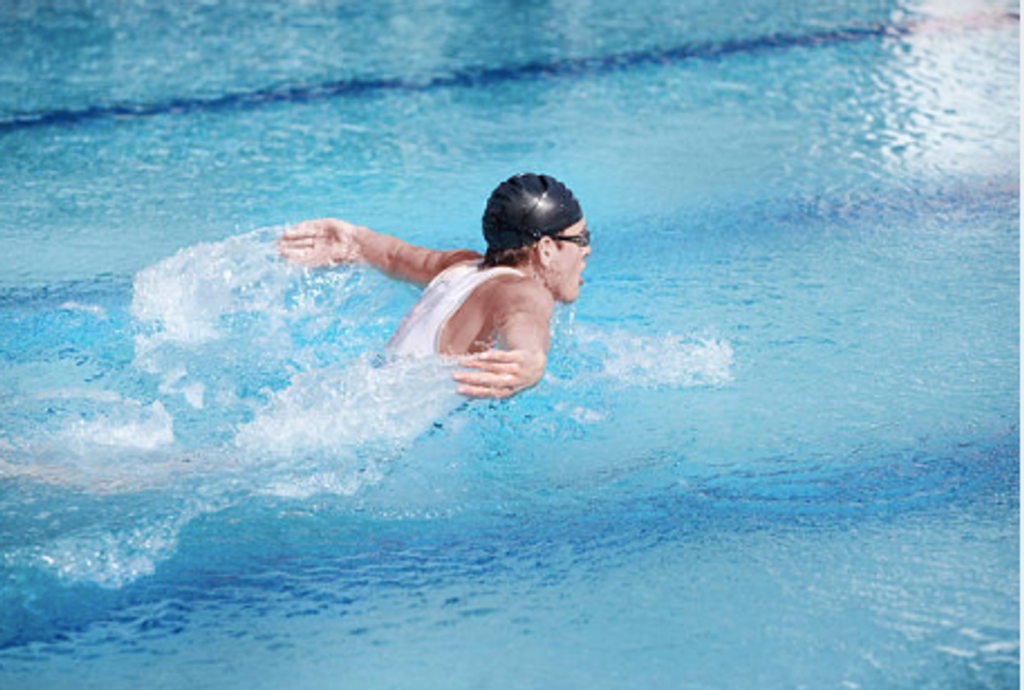Ready to become a butterfly stroke pro and glide through the water?
This blog has everything you need to know about the challenging butterfly stroke, from history to techniques.
And we’ll help you improve your technique with a step-by-step guide, no matter your experience level!
Dive in and allow this blog to guide you in becoming an expert at butterfly swimming.
Table of Contents
What is a Butterfly Stroke in Swimming?

The butterfly stroke is a technique where you use both your arms and legs to create a dolphin-like motion through the water, resulting in a beautiful wave-like effect. It’s a stunning stroke, but quite difficult to master.
Competitive swimmers use this stroke in events, and people also do it for recreational fitness. Now that we have learned what it is, let’s explore the history of the butterfly stroke.
The History: Butterfly Stroke
Butterfly stroke was first developed in the 1930s and was originally known as the “dolphin” stroke.
Over time, it evolved into the butterfly stroke that we recognize today and was officially recognized as a distinct swimming style in 1956.
You may be wondering, how hard is it to learn the backstroke?
Why is a Butterfly Stroke so Hard to Swim?
Butterfly swimming can be quite tiring as it uses a lot of energy compared to other strokes.
You may feel more tired because your muscles need more oxygen when you move both your arms and legs at the same time.
Let’s compare butterfly with freestyle stroke to see which one is the hardest to learn.
Is Butterfly Strokes harder than Freestyle Strokes?
Yes, most people agree that the butterfly stroke is harder to do than the freestyle stroke.
This is because the butterfly stroke requires greater upper body strength, coordination, and endurance than the freestyle stroke.
Given that the butterfly stroke is the most challenging of all, is it possible for beginners to master it? Let’s see.
Can a Beginner Learn Butterfly Stroke?
Yes, even beginners can learn butterfly strokes with practice and patience.
It varies from person to person, but with consistent practice and proper guidance, you can feel comfortable with it within a few weeks or months.
Let’s examine the techniques used in butterfly swimming more closely.
4 Butterfly Swimming Techniques

The butterfly stroke has unique movements and a graceful appearance.
If you’re a beginner, these four techniques are worth it.
Learn these tips that can help you perfect this stroke:
Body position
Keep your body in a horizontal position, with your face in the water and your arms extended forward.
Arm movement
Bring both of your arms over your head and into the water at the same time.
Then, pull them down and around in a circular motion.
Leg movement
Both legs are extended together and brought up toward the body
This is followed by a downward kick in a dolphin-like motion
Breathing
Swimmers must time their breathing carefully
They take a breath during the arm recovery phase when their arms are out of the water.
Now, it’s time to jump in the water and become a butterfly swimming pro with our step-by-step guide!
Learning How to Swim Butterfly Stroke – Step-by-Step Guide
If you want to learn how to swim the butterfly stroke quickly, here are the steps you can follow:
Step 1
Start by positioning yourself face-down in the water.
Step 2
Dolphin kick – push the water with your chest and kick your legs as one.
Step 3
Add the arm stroke by stretching out your arms in front of you and pulling them back while doing the dolphin kick.
Step 4
As your arms reach your hips, push them down towards your sides, creating a wave motion in the water.
Step 5
Repeat these steps, coordinating the dolphin kick with the arm stroke and wave motion.
Step 6
Remember to breathe in through your mouth and exhale through your nose as your head comes out of the water during the arm stroke.
Step 7
Practice this stroke often to improve your technique and build endurance.
Time to Unleash your Inner Butterfly
Well, there you have it!
You’ve learned the basics and techniques of the butterfly stroke, and now you’re ready to hit the pool like a pro.
Just remember to start slowly and practice your technique until it becomes second nature.
With enough practice, you could make it to the next Olympics!


